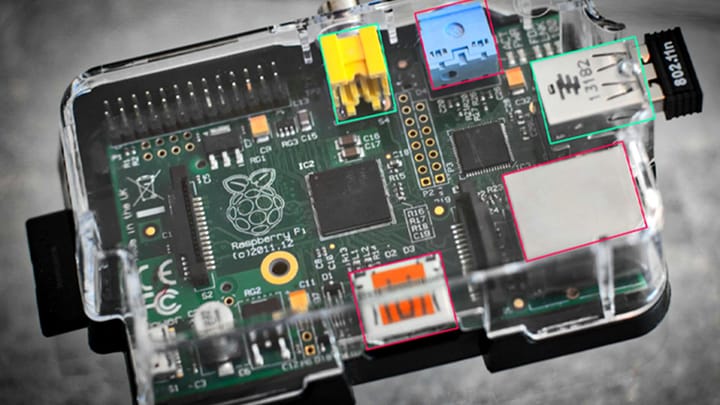What's the Best Solution for Data Annotation for Machine Learning?

As a machine learning practitioner, you know firsthand how vital annotated data is. Without annotated data, a machine learning model couldn't perform.
But finding the right solution for obtaining annotated data can be a challenge. Whether it's a large project or a small study, it's hard. This article helps you find the best way to perform data annotation for machine learning.
Solutions for Data Annotation for Machine Learning
This article explores the options available. Examples include self-annotation, crowdsourcing annotation, pre-annotated data sets, and automated annotation. You'll learn the pros and cons of each option. Also, you'll receive tips for selecting the solution that best fits your needs and budget.
Self-Annotation
Self-annotation, or in-house annotation, refers to having members of your organization annotate data. This solution can be effective for smaller projects or specific quality requirements.
Pros of self-annotation:
- Cost-effective – Self-annotation does not have extra costs beyond your in-house team's time.
- Control over data quality – Using your team gives you more control over the quality. And you can ensure that it meets your specific requirements.
- In-house – Self-annotation allows you to keep the entire process in-house. You may prefer this option for confidentiality or other reasons.
Cons of self-annotation:
- Time-consuming – Annotating data can be time-consuming. It could take a while if you do not have a large team.
- Limited diversity of annotators – Using your team for annotation can result in bias.
- Potential for bias – Be aware of bias when using self-annotation. It is easier for bias to go undetected when the annotators are part of the same team or organization.
Self-annotation can be a cost-effective and convenient solution for smaller projects. But, it may not be suitable for larger projects requiring a diverse pool of annotators.
Crowdsourcing Annotation
Crowdsourcing annotation involves outsourcing the annotation process to a large group of individuals. They are often referred to as "crowd workers." Crowdsourcing platforms like Amazon Mechanical Turk provide a pool of qualified annotators. They can complete various annotation tasks.
Pros of crowdsourcing annotation:
- Fast – Crowdsourcing annotation can be a quick solution. A large pool of annotators is available to complete the task.
- A large pool of annotators available – Crowdsourcing platforms provide access to diverse annotators. It can be beneficial for tasks requiring a wide range of expertise or perspectives.
- Can handle various annotation tasks – Crowdsourcing platforms can accommodate many jobs. Examples include simple data labeling and natural language processing.
Cons of crowdsourcing annotation:
- Cost – Crowdsourcing annotation can be more costly than other solutions. It requires payment to the annotators.
- Potential for lower data quality – The quality varies depending on the individual's qualifications.
- Difficulty in ensuring qualifications – It's hard to ensure that crowdsourcing annotators have capabilities.
Crowdsourcing annotation can be a fast and flexible solution for various annotation tasks. But, you must consider the potential for lower data quality. Also, there are difficulties in ensuring annotator qualifications and motivation.
Pre-Annotated Data Sets
Pre-annotated data sets are data collections that other organizations have already annotated. You can buy these data sets can or access them for free. Then, you can use them for training machine learning models.
Examples of pre-annotated data sets include ImageNet. Another is CoNLL, a natural language processing data set annotated with part-of-speech tags.
Pros of using pre-annotated data sets:
- Saves time and resources – A pre-annotated data set can save time and resources.
- High-quality annotations – Experts in the field create high-quality pre-annotated data sets.

Cons of using pre-annotated data sets:
- Limited to available data sets – Pre-annotated data sets have limits. Finding a data set that aligns with your specific project needs may be challenging.
- It may not align with specific project needs – If a pre-annotated data set is available, it may not be complete.
Using pre-annotated data sets can be a convenient, high-quality solution. But, consider the limitations of available data sets. And check if they align with the specific needs of your project.
Automated Annotation
Automated annotation uses algorithms or software to annotate data for machine learning projects. It's ideal for large-scale projects or tasks with well-defined rules. In addition, it can be a cost-effective and efficient solution.
Examples of automated annotation techniques include:
- Rule-based systems – These systems use a set of predefined rules to annotate data. They can be adequate for tasks with clear and consistent guidelines. But you may struggle with more complex tasks.
- Active learning – involves training a machine learning model to identify patterns. Then, it makes predictions, which a human annotator verifies. Then you can fine-tune the model based on the feedback from the annotator. Active learning can be a more practical solution for complex tasks. But it may need more resources and time than other automated annotation techniques.

Pros of automated annotation:
- Fast – Automated annotation can be a quick solution. It does not need human annotators.
- Cost-effective – Automated annotation can be more cost-effective than other solutions.
- Can handle large amounts of data – You can process large data quantities. This aspect makes it suitable for large-scale projects.
Cons of automated annotation:
- Limited to specific tasks – Automated annotation may not suit jobs requiring subjective interpretation.
- It may produce lower quality annotations – It may not deliver the same quality as humans.
Automated annotation can be a fast and cost-effective solution for specific tasks—projects with well-defined rules and large amounts of data candidates.
Choosing the Best Solution for Your Project
Consider these factors when choosing the best data annotation solution. These may include:
- Budget – Different solutions for annotated data can have varying costs. Selecting a solution that fits your budget constraints is crucial.
- Time constraints – Some solutions for annotated data may be faster than others. If you are working on a tight deadline, it may be necessary to rank speed over other factors. Examples include self-annotation and automated annotation.
- Required annotation quality – The quality impacts the accuracy of your machine-learning model. If high-quality annotations are a priority, invest in a solution that provides them.
- Type of annotation task – Different annotation tasks may need different solutions. For example, an automated annotation may be suitable for tasks with well-defined rules. Jobs that need more complex judgment may be better.
First, define your project's specific needs and constraints. Next, outline the requirements and limitations of your project. For example, include the type of annotation task, budget, and time constraints.
Next, research and compare different options. Take the time to explore the available solutions and their pros and cons. Look for reviews or case studies from other practitioners. Finally, test and test solutions and compare the results.
Conclusion
Each solution has its pros and cons. The most appropriate solution will depend on your project's specific needs and constraints.



Comments ()